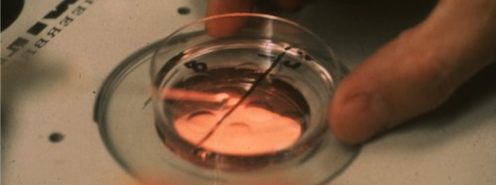Work plan

Project management (Poul Hyttel)
Aim: To secure precise and tight governance of the project.
Poul Hyttel retired on 1 June 2021 and since then former project leader trainee, Jan Secher, took over as acting project leader. Betina W Jensen is
EliteOva is structured in 5 work packages (WPs) with the allocation of relevant personnel and funding.
Aim: To increase societal readiness level by studying the views of the key stakeholders and consumers and to create a web portal.
The views of key stakeholders along the value chain of animal breeding and production will be studied and the propensity to use (stakeholders), and accept the end-product (the consumers), and embrace (both groups) the new technologies will be assessed. In addition, dissemination platforms (including a web portal, stakeholder outreach and articles aimed at a wider public) will be created.
WP2.1: Historical data on calves resulting from in vitro production (IVP) of embryos
Aim: To use
The SME partner Masterrind has over the past years produced high numbers of calves by IVP using the media series from the EliteOva partner ETB as well as other media. Data on calving and calf health will be retrieved, analyzed and implemented for optimization of the IVP procedures.
WP2.2: In vitro production (IVP) of embryos (Postdoc NN, Jan Secher)
Aim: To produce embryos for WP2.3 and WP4 and collect biopsies of adequate quality for WP3.
Ultrasound-guided OPU will be performed and oocytes will be matured, fertilised with sexed semen and cultured until the blastocyst stage, when biopsies will be taken for WP3 and the embryos cryopreserved. Standard operating procedures (SOPs) for these steps and for retrieval of biopsies, cryopreservation and cool storage of embryos will be defined. Genomic characterised parental animals will be used.
WP2.3: Transfer of embryos and pregnancies (Søren E Madsen)
Aim: To produce calves using embryos from WP2.2 and collect material for WP4 and WP5.
Embryos will be transferred to recipients and the pregnancies (>100) monitored by palpation/ultrasound scanning. Potentially abnormal pregnancies will be terminated and fetuses and placenta examined in detail. A total of 10 IVP and 10 control calves (from the transfer of in vivo-derived embryos) will be euthanized, necropsied (WP5) and samples collected from liver and brain for WP4 and WP5.
Aim: To use biopsies from WP2.2 for genomic selection and identify SNPs related to bulls’ IVP performance.
The IVP embryos will be genotyped from their biopsies using an Illumina BeadChip. The expected genetic merit (Nordic total merit, NTM) of the embryos will be predicted based on population data. Over the course of the project, SNP information on novel traits such as methane-emission and feed-efficiency will be implemented and SNPs related to the bull’s performance at IVP will be identified.
Aim: To verify the normality of the gene expression and epigenome in IVP embryos and calves from WP2.2 and WP2.3.
RNA will be extracted from IVP and control embryos and calves. Gene expression data from embryos and calves will be analyzed using the EmbryoGENE bovine platform. To study the underlying fetal programming, epigenetic modifications will be investigated. DNA methylation will be analyzed using the EmbryoGENE bovine epigenomic platform and histone modifications by chromatic immuno-precipitation (ChIP) on IVP and control embryos and calves in close collaboration with Université Laval, Canada and Melior, US. Systems biological analyses will aim at identifying key gene networks and differentially regulated pathways resulting from IVP.
Aim: To secure that health and normality of the pregnancies and calves.
The offspring will be examined closely to rule out any adverse effects of the IVP procedure on development and health. This will include laboratory examination of fetal membranes, aborted fetuses, stillborn calves and all other offspring dying during the study as well as a detailed examination of 20 calves from WP5. The health and development of viable offspring will be followed closely by recording viability and blood biochemical profiles at the age of 0, 7 and 30 days after calving.
